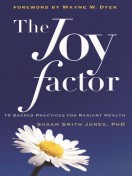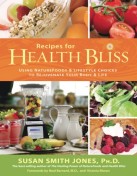15 Superfoods: Eat Your Way to Vibrant Health
Author: admin
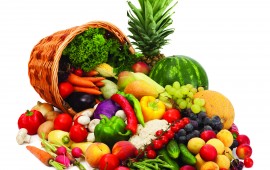
Get your healthy lifestyle off to a great start this month with these 15 age-defying, heart-strengthening, cancer-busting, energy-boosting and body-slimming Super Healthy Foods.
All of these foods are easy to find in your supermarket or natural food store. Just make sure that they are included and available in your health-promoting kitchen.
1. Bananas — Monkeys may be wiser than we think — their favorite food is among the most nutritious of tropical fruits. Fiber from green, unripe bananas reduces bad cholesterol and increases the good by as much as 30 percent, while a ripe banana is one of the best ways to soothe an upset stomach. Bananas are a wonderful source of energy, can relieve heartburn and will also help decrease the risk of stroke. And with the possible exception of strawberries, no other fresh fruit is higher in minerals.
2. Broccoli — Broccoli has almost twice as much protein as steak — 11.2 g per 100 calories compared with only 5.4 g. (Most of the calories in meat come from fat, but the calories in green veggies come from protein.) It has been proven effective against cancer, heart disease and a host of other serious conditions. Its powerful sulforaphane content delivers a double punch to cancer-causing chemicals — destroying any carcinogenic compounds that you have ingested, then creating enzymes that eat up any carcinogens left over from that reaction — and it also contains indole-3-carbinol, which helps your body to metabolize estrogen, potentially warding off breast cancer.
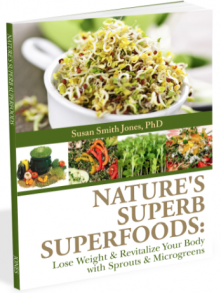 3. Broccoli Sprouts — In a previous article, SML blogger Susan Smith Jones briefly mentioned broccoli sprouts. It takes 55 to 70 days to grow a mature broccoli plant, whereas it takes only 3 to 4 days to grow these sprouts from seeds. These little gems of nature are teaming with more nutrients than broccoli. Studies have shown that eating one quarter cup of broccoli sprouts daily will reduce your risk of cancer by 50%. It only takes about 6-7 minutes spread out over four days. Children love to participate in the growing process, too.
3. Broccoli Sprouts — In a previous article, SML blogger Susan Smith Jones briefly mentioned broccoli sprouts. It takes 55 to 70 days to grow a mature broccoli plant, whereas it takes only 3 to 4 days to grow these sprouts from seeds. These little gems of nature are teaming with more nutrients than broccoli. Studies have shown that eating one quarter cup of broccoli sprouts daily will reduce your risk of cancer by 50%. It only takes about 6-7 minutes spread out over four days. Children love to participate in the growing process, too.
Get a FREE copy of Susan’s new e-Book, Nature’s Superb Superfoods: Lose Weight & Revitalize Your Body with Sprouts. You’ll have at your fingertips the ABCs of how to grow sprouts at home, detailed information on their nutritional value, and the best ones for your body or nutritional needs.
4. Parsnips — Parsnips could be nicknamed the “beauty food” because of the way their nutritional components help strengthen hair and nails and improve skin quality. People who suffer from acne or skin disorders will appreciate the skin-flattering benefits of their unique balance of potassium, phosphorus and vitamin C. In Susan’s full-color recipe book, Recipes for Health Bliss, she provides lots of delicious, nutritious, and easy-to-prepare recipes on how to use parsnips and all of the superfoods mentioned in this Blog. You can add parsnips when you make mashed potatoes, grate them in salads, and add them to stir-fries. In fact, you can use parsnips any way you’d use a carrot such as adding them to your fresh juices.
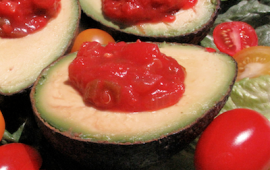 5. Avocados — Avocados have more protein than any other fruit. Sometimes known as “nature’s butter,” they have only about a quarter of the fat calories contained in the same weight of dairy butter. Ounce for ounce, they also provide more heart-healthy monounsaturated fat, vitamin E, folate, potassium and fiber than other fruits. You can mash avocado on whole grain bread, into baked potatoes and even use it as a hydrating mask. They also exceed other fruits as a source of the powerful antioxidant lutein, which appears to protect arteries from hardening and the eyes from cataracts and macular degeneration.
5. Avocados — Avocados have more protein than any other fruit. Sometimes known as “nature’s butter,” they have only about a quarter of the fat calories contained in the same weight of dairy butter. Ounce for ounce, they also provide more heart-healthy monounsaturated fat, vitamin E, folate, potassium and fiber than other fruits. You can mash avocado on whole grain bread, into baked potatoes and even use it as a hydrating mask. They also exceed other fruits as a source of the powerful antioxidant lutein, which appears to protect arteries from hardening and the eyes from cataracts and macular degeneration.
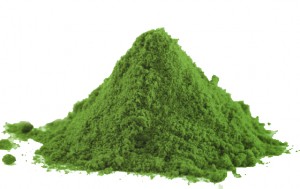 6. Spirulina — A superfood extraordinaire and the world’s best multi-nutrient whole-food supplement, Spirulina has been scientifically studied for decades. An amazing food, it would benefit your entire family, including your pets. Specifically, it helps regulate blood sugar, blood pressure and cholesterol; alleviates pain from inflammation and delivers antioxidant activity to ward off life threatening diseases like cancer, Alzheimer’s heart disease and stroke; protects the liver and kidneys and removes radiation from the body; improves the immune system, alleviates allergies, defends against many different viruses; helps your eyes and brain; eases depression; supports weight loss; increases friendly flora in the intestines and improves digestion; and so much more. It’s an ideal nutritional supplement for all lifestyles with a history of scientific experiments and clinical trials and is easy to take in a tablet or powder form.
6. Spirulina — A superfood extraordinaire and the world’s best multi-nutrient whole-food supplement, Spirulina has been scientifically studied for decades. An amazing food, it would benefit your entire family, including your pets. Specifically, it helps regulate blood sugar, blood pressure and cholesterol; alleviates pain from inflammation and delivers antioxidant activity to ward off life threatening diseases like cancer, Alzheimer’s heart disease and stroke; protects the liver and kidneys and removes radiation from the body; improves the immune system, alleviates allergies, defends against many different viruses; helps your eyes and brain; eases depression; supports weight loss; increases friendly flora in the intestines and improves digestion; and so much more. It’s an ideal nutritional supplement for all lifestyles with a history of scientific experiments and clinical trials and is easy to take in a tablet or powder form.
Are you interested in losing weight? Spirulina is Susan’s favorite whole food supplement to recommend for anyone wanting to lose weight and say “Good-Bye” to unhealthy eating habits, too. In her 90-day clinical study with over 100 men and women, she discovered that Hawaiian Spirulina (when taken daily) helps curb the appetite, eliminates carb and junk food cravings, precludes overeating, and supports weight loss to the tune of between 1 – 3 pounds weekly when taking two teaspoons of the powder daily (morning and afternoon) or the equivalency in tablets. Each participant also added in a 30-minute walk daily.
- For more Spirulina information, visit the Hawaiian Spirulina Pacifica website.
- Through the end of the month, you can get a 25% discount when you use my Special Savings Code – GREENHEALTH.
7. Pomegranates — This dark red fruit is Hot news these days — especially as a juice. Pomegranates are packed full of disease-fighting antioxidants. Some studies suggest that they offer almost three times more than established antioxidant  sources such as green tea, red wine, blueberry juice and cranberry juice. They also contain potassium, fiber, vitamin C and niacin, all of which contribute to increased energy and good health, and have been shown to reduce plaque build-up in arteries by up to 44 percent.
sources such as green tea, red wine, blueberry juice and cranberry juice. They also contain potassium, fiber, vitamin C and niacin, all of which contribute to increased energy and good health, and have been shown to reduce plaque build-up in arteries by up to 44 percent.
 8. Apples — Eating an apple a day could very well keep the cardiologist away. Current studies suggest that eating apples regularly reduces the risk of stroke and your chances of dying from a heart attack. They lower cholesterol and also appear to decrease the risk of lung cancer. Eating them whole, with the skin on, provides the highest level of nutritional value.
8. Apples — Eating an apple a day could very well keep the cardiologist away. Current studies suggest that eating apples regularly reduces the risk of stroke and your chances of dying from a heart attack. They lower cholesterol and also appear to decrease the risk of lung cancer. Eating them whole, with the skin on, provides the highest level of nutritional value.
9. Parsley — This common herb is a powerhouse of the nutrients that rejuvenate and detoxify. Include it when you make fresh juice. Nibble a few leaves when you want your breath to be sweeter. Chop it into salads, soups, sandwiches and pasta dishes. Parsley is also a stress-buster, and studies have shown it to be effective in reducing depression, lowering cholesterol and strengthening kidneys. Many herbalists recommend parsley to relieve the symptoms of rheumatism and PMS.
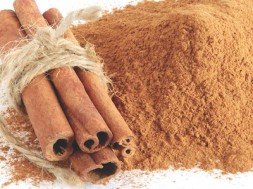 10. Cinnamon — This ancient spice (obtained from the bark of Asian evergreens) and highly versatile flavoring helps to relieve bloating and stabilize blood sugar. Cinnamon contains MethylHydroxy Chalcone Polymer (MHCP), which speeds up the processing of sugar in your body. So putting cinnamon sticks in your tea or water, or sprinkling just a tiny amount on desserts, fruits, cereal and into smoothies, will make your insulin release much more efficient, which may slow aging and help ward off diabetes and obesity.
10. Cinnamon — This ancient spice (obtained from the bark of Asian evergreens) and highly versatile flavoring helps to relieve bloating and stabilize blood sugar. Cinnamon contains MethylHydroxy Chalcone Polymer (MHCP), which speeds up the processing of sugar in your body. So putting cinnamon sticks in your tea or water, or sprinkling just a tiny amount on desserts, fruits, cereal and into smoothies, will make your insulin release much more efficient, which may slow aging and help ward off diabetes and obesity.
11. Oats — Inexpensive, readily available and incredibly easy to incorporate into your life, oats contain twice as much protein as brown rice and are an excellent source of complex carbohydrates to maintain your energy levels through the day. They improve your resistance to stress, help to regulate the thyroid, soothe the nervous and digestive systems, reduce cigarette cravings and stabilize blood sugar levels.
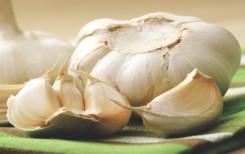 12. Garlic — Herbalists have used garlic to treat all sorts of diseases for thousands of years. As well as being scrumptious, it’s a rich source of the sulphur compounds that keep your body chemistry in balance — fighting infections, slowing down the production of cholesterol and lowering blood pressure. There is even evidence that garlic helps to fight cancer and improves the action of the liver and the gall bladder. Add garlic to your cooking and salad dressings, or roast unpeeled cloves for 40-45 minutes, then peel and mash them into purées and sauces.
12. Garlic — Herbalists have used garlic to treat all sorts of diseases for thousands of years. As well as being scrumptious, it’s a rich source of the sulphur compounds that keep your body chemistry in balance — fighting infections, slowing down the production of cholesterol and lowering blood pressure. There is even evidence that garlic helps to fight cancer and improves the action of the liver and the gall bladder. Add garlic to your cooking and salad dressings, or roast unpeeled cloves for 40-45 minutes, then peel and mash them into purées and sauces.
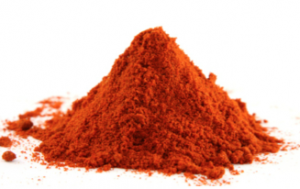 13. Astaxanthin — Natural Astaxanthin is a red carotenoid and an exceptionally powerful antioxidant extracted from green microalgae called Haematococcus Pluvialis. Grown on the pristine Kona Coast of Hawaii, Haematococcus Pluvialis is the richest source of Astaxanthin. It’s the ultimate nutrient for joint, tendon, and muscle health; skin health; and eye and brain health. It has been documented in human clinical studies to show a wide range of benefits, including the extraordinary ability to act as a safe and natural way to manage inflammation. While sporadic inflammation can be a normal and healthy response to slight tissue damage such as exercise, prolonged inflammation can have more debilitating consequences. Fortunately, Astaxanthin supports the body’s normal inflammatory response. Due to its molecular structure, Astaxanthin is one of the few antioxidants with the ability to cross the blood brain and blood retinal barriers, bringing superior support and protection to the brain, eyes, and central nervous system. Through effectively scavenging for free radicals and by eliminating singlet oxygen formation, BioAstin provides concentrated antioxidant protection as it combats inflammation. In other words, Astaxanthin is the ideal nutrient for our joints, skin, eyes, and brain.
13. Astaxanthin — Natural Astaxanthin is a red carotenoid and an exceptionally powerful antioxidant extracted from green microalgae called Haematococcus Pluvialis. Grown on the pristine Kona Coast of Hawaii, Haematococcus Pluvialis is the richest source of Astaxanthin. It’s the ultimate nutrient for joint, tendon, and muscle health; skin health; and eye and brain health. It has been documented in human clinical studies to show a wide range of benefits, including the extraordinary ability to act as a safe and natural way to manage inflammation. While sporadic inflammation can be a normal and healthy response to slight tissue damage such as exercise, prolonged inflammation can have more debilitating consequences. Fortunately, Astaxanthin supports the body’s normal inflammatory response. Due to its molecular structure, Astaxanthin is one of the few antioxidants with the ability to cross the blood brain and blood retinal barriers, bringing superior support and protection to the brain, eyes, and central nervous system. Through effectively scavenging for free radicals and by eliminating singlet oxygen formation, BioAstin provides concentrated antioxidant protection as it combats inflammation. In other words, Astaxanthin is the ideal nutrient for our joints, skin, eyes, and brain.
- For more information on Astaxanthin, visit the BioAstin website.
- Through the end of the month, you can get a 25% discount using my Special Savings Code – GREENHEALTH.
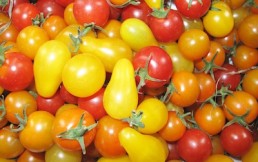 14. Tomatoes — This beautiful low-calorie fruit is jam-packed with nutrients and phytochemicals, which boost the body’s immune defenses. Whether in soups, sauces or salads, tomatoes are rich in vitamins C and B and also contain lots of lycopene, which appears to act as a protective factor against cancer (and may also benefit the heart). Cooked tomatoes contain more lycopene than raw, and most of the nutritional value is contained in the skin, so, ounce for ounce, cherry tomatoes are more nutritious than large ones.
14. Tomatoes — This beautiful low-calorie fruit is jam-packed with nutrients and phytochemicals, which boost the body’s immune defenses. Whether in soups, sauces or salads, tomatoes are rich in vitamins C and B and also contain lots of lycopene, which appears to act as a protective factor against cancer (and may also benefit the heart). Cooked tomatoes contain more lycopene than raw, and most of the nutritional value is contained in the skin, so, ounce for ounce, cherry tomatoes are more nutritious than large ones.
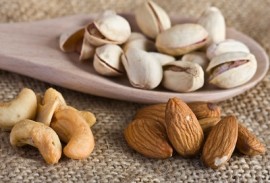 15. Almonds — Two ounces of almonds give you more than 50 percent of your daily magnesium requirement—a mineral that’s important for heart health. Eating almonds every day for at least a month has been shown to reduce cholesterol and lower other risk factors for heart disease. A study also suggests that they may reduce the risk of colon cancer. Sprinkle them in salads or grind into pastry.
15. Almonds — Two ounces of almonds give you more than 50 percent of your daily magnesium requirement—a mineral that’s important for heart health. Eating almonds every day for at least a month has been shown to reduce cholesterol and lower other risk factors for heart disease. A study also suggests that they may reduce the risk of colon cancer. Sprinkle them in salads or grind into pastry.
♥
From Susan: To learn more about my new 3-book set — Walking on Air: Your 30-Day Inside and Out Rejuvenation Makeover (foreword by Alexandra Stoddard), The Joy Factor: 10 Sacred Practices for Radiant Health (foreword by Wayne Dyer) and my full color, natural-food cookbook with over 150 photographs Recipes for Health Bliss, (forewords by Neal Barnard, MD and Victoria Moran), please visit: SusanSmithJones.com.

